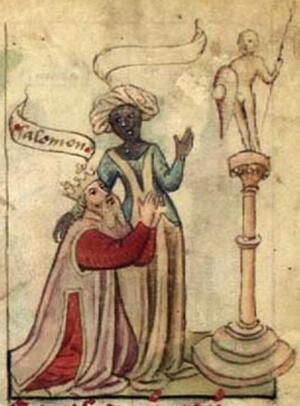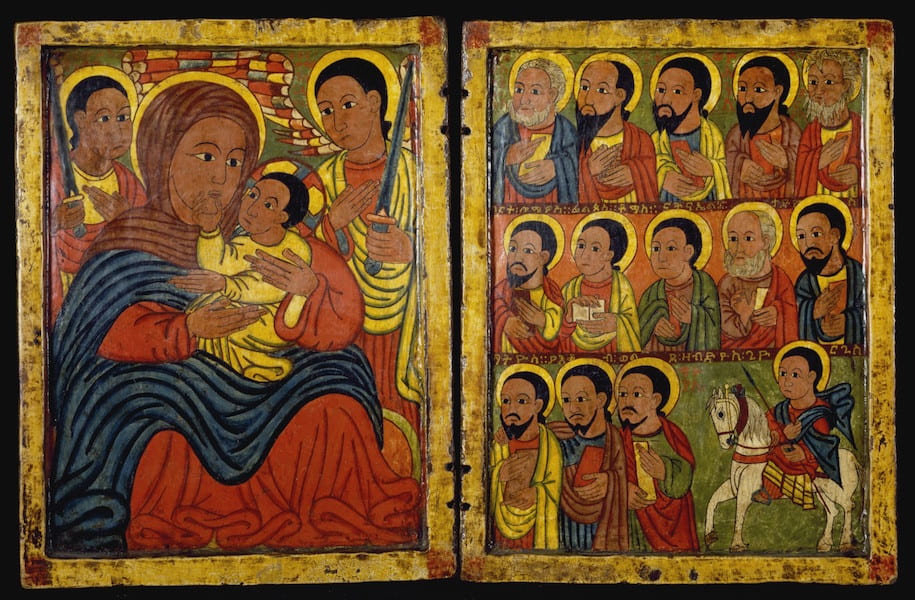By the Primary Editors
***
What is Ethiopia and where is Ethiopia? At first glance, these questions seem simple enough. However, as our forum “Intellectual Histories of Ethiopia” shows, there have been centuries of complex contestation over the meanings and geographies of Ethiopia. Despite its ancient history and turbulent present, Ethiopia’s contributions to global intellectual histories are still mostly overlooked. Historians of ideas have begun to address the inherent Eurocentrism within the broader field of intellectual history. Recent works have drawn our attention to the extra-European world as a vibrant space of conceptual production. Though much of the work remains to be done, our forum takes a step in that direction by showcasing new research on the history of ideas in and from Ethiopia. We seek to contribute to the ongoing decolonization of the field of intellectual history and thus, opening it up to include non-white and non-male actors as agents in their histories. We hope that this project will instigate new interest in Ethiopia and its diverse and rich traditions of intellectual histories. It is a growing work in progress; if you would like to contribute a piece on Ethiopia (broadly defined) and decolonization, please do get in touch with us here.
Although many sources on Ethiopia are fragmentary, texts in multiple languages play a significant role in all of our pieces. Gə’əz has been the dominant literary language for much of Ethiopia’s long history. As our three opening pieces demonstrate, scholars of Ethiopian history of ideas need to be versed in multiple languages, such as those from Omotic and Cushite families, Greek, Latin, Arabic, Hebrew, Syriac, Turkish, Portuguese, and Italian. A daunting prospective for any aspiring scholar, but one that is rewarded by the richness and transcultural interconnectedness of intellectual life in this region.
The geographical range of these languages attests to the breadth of Ethiopia’s intellectual history, and so does the influence of religion. In the area now known as Ethiopia and the Horn of Africa, many religions exchanged, jostled and fought. This forum’s pieces show, as some recent books have done, that Ethiopia is a key player in the emergence of monotheistic faith. Christianity, for instance, while regarded as the cornerstone of European civilization with roots in Latin, Greek or Slavonic traditions, has to be resituated as having an influential historical tradition in the Horn of Africa. And as so with language, scholars of Ethiopia encounter multiple religions across its history.

This forum has three forthcoming pieces across this week and next. The first is Adam Simmons‘ piece which excavates the history of the toponym of ‘Ethiopia,’ which has two distinct aspects: a pre-Christian and a Christian one. The former exists in Greek, Latin and the Hebrew Bible and outlines a large, vague region in north east Africa. The latter is rooted in the Solomonic dynasty and their rulership of the region from King Solomon and the Queen of Sheba.
Where are the most important Ethiopian philosophical manuscripts in the world? Jonathan Egid tells us the story of how Saint John’s University in rural Minnesota came to be the home of these texts and a titan of Ethiopian scholarship, Getatchew Haile. This piece invites to think about translations of Greek texts in the region, and specifically, Hatäta Zär’a Ya‛ǝqob, the topic of Egid’s doctoral research: the ‘jewel of Ethiopian literature’ or a forgery (or both)?
In his think piece, Fasil Merawi presents three contesting responses by Ethiopian intellectuals to modernity. The first group were adherents to Western instrument rationality and thereby argued that Ethiopia was in a backward state. The second group was more nationalist in temperament who found that ancient Ethiopia could rival the greatest civilizations of the world, and the third group were more accommodationist between Western social sciences and Ethiopian cultural distinctiveness.
Featured Image: Diptych with Mary and Her Son Flanked by Archangels, Apostles and a Saint. AXIA ART Ltd., London [date and mode of acquisition unknown]; Robert and Nancy Nooter Collection, Washington, D.C., October 1992, by purchase; Walters Art Museum, 2001, by purchase [Creative Commons]



